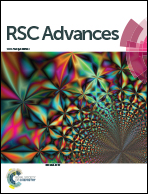Removal of mixed contaminants, crystal violet, and heavy metal ions by using immobilized stains as the functional biomaterial
Abstract
A new functional biomaterial based on Burkholderia vietnamiensis C09V (C09V) was immobilized on beads and used for simultaneous removal of both heavy metals and crystal violet (CV). The results showed that removal of CV and metal ions using immobilized cell bead (biomaterial) was more efficient than that of free cells, wherein 89.4% of CV and 64.1% of Cu(II) were removed after 42 h of using the biomaterial, whilst only 27.1% of CV and 23.9% of Cu(II) were removed by free cells. Similar results were also observed in the CV and Cr(VI) removal. Fourier transform infrared spectroscopy (FTIR) revealed the change of functional groups in the presence of heavy metals. Scanning electron microscopy (SEM) showed that the existence of Cu(II) and Cr(VI) affected the cellular morphology of the strain. X-ray energy-dispersive spectrometer (EDS) indicated that Cu(II) and Cr(VI) adsorbed. Further Cr(VI) reduced to Cr(III) was observed by X-ray photoelectron spectroscopy analysis (XPS). Finally, reusability and wastewater application were carried out, which shows that this functional material has a potential for co-removal of CV and heavy metals.


 Please wait while we load your content...
Please wait while we load your content...